In our family and in our classroom, we don’t take what kids say seriously.
Why not?
Because, we take what kids mean seriously.
Kids (actually people) say things in the best way that they know how. But kids don’t have the life experience, or vocabulary that us adults do. So one of our most important jobs as parents is to hear the meaning underneath what kids say.
In Parent Effectiveness Training by Thomas Gordon this concept is called a “uniquely coded message”. Our job as parents is to translate our children’s messages, to figure out what is happening underneath the surface, so that we can help our children solve their problems.
Sometimes with kids all we see is the tip of the iceberg while the real truth is underneath the surface.
Haim Ginott, the childrearing sage of the 50’s to the 70’s, tells this story about a child coming into the Kindergarten classroom for the first time. (This story is told in Mindset by Carol Dweck)
The boy sees the paintings on the walls and says, “Who made those ugly pictures?” The mom (misinterpreting her son) says, “It’s not nice to call pictures ugly when they are so pretty.”
But the teacher knew exactly what the boy meant. He was probably meaning something like, “It’s my first day here. I’m nervous. What if my paintings don’t look as good?”
The teacher said, “In here you don’t have to paint pretty pictures. You can paint mean pictures if you feel like it.” And the boy gave the teacher a big smile.
The boy then picked up a broken toy and asked, “Who broke this fire engine?”
The mom (again misinterpreting) said, “What difference does it make to you who broke it? You don’t know anyone here.”
But the teacher understood that he was really asking which was, “Am I emotionally safe here? What happens to me if I break a toy?”
The teacher said, “Toys are for playing. Sometimes they get broken. It happens.”
The boy waved goodbye to his mom and went off to play knowing that Kindergarten was a safe place and that he would not be judged or labeled.
So what if a young child says something like, “I hate you” or “I want to kill my sister” or “Mom, I want you and Dad to get a divorce.”?
How do you respond to those deeply troubling words? What is the message underneath?
A child who is 10-years old or younger doesn’t really understand killing, death, or divorce. So then what could be the message underneath “I hate you” or “get a divorce” or “I want to kill my sister”? We certainly can’t say for sure–every situation is different and you know your family better than we ever will–but here are our thoughts.
“I hate you” is frequently a code message for “I don’t like what you are doing”. “Hate” is one of the strongest words that young children know. So young children use “hate” in situations when they feel stuck and out of choices, to express in the strongest of terms “I’m sad, hurt, disappointed, or angry. I don’t like what you’ve said or done.” Sometimes, if we respond with empathy to this strong message, kid’s big feelings will melt away. You can say something like, “I know that you’re really disappointed that I’m not letting you go to your friend’s house. That makes sense to me. I wish it could work out. I don’t see how. But I am willing to figure out another time you can go and to talk about what you want to do instead.”
“I want to kill my sister” (just like “I hate you”) is used when young children are don’t see any choices and want to express, in the strongest terms they know, that “I don’t like something that my sister did or said”. A way for you to respond and help the child’s feelings resolve could sound like this, “Oh, you don’t like that you sister keeps putting her feet on your body. You asked for her to stop and she keeps on doing it. You don’t know what to do now. I’m willing to talk to her with you and let’s brainstorm what other things you can do. Like maybe you’d rather be in a different part of the house? You can stay here at the couch. Let’s see if she’s willing to move to the table.”
Rather than saying, “It’s not nice to say that you want to kill her” or “It’s not nice to say that you hate someone” responding with empathy makes you and your child part of the same team. You are problem solving together. Later on, after you’ve resolved the issue, you can talk to your child about different ways she can express what she’s feeling without using the words “hate” or “kill”.
“I want you and Dad to get a divorce” could be a way for a child to express that “there is something in our family that is not working”. Maybe your husband yells and your kids get scared, or maybe there is fighting and tension in the house that the children see or feel. Again responding to the meaning with understanding can increase the connection between you and your children as well as increase the healing. Talking about a “family issue” in an age appropriate way can help kids feel more secure during an uncomfortable time.
You could say, “Are you saying that you want dad and I to get a divorce because you don’t want him to use his big, loud voice with you? Ah, that makes sense to me. Dad loves you, just like I do and he doesn’t want you to feel scared. It’s important for him to know how you feel so that he can make choices about how to change. Would you like help talking to him about how you feel or do you want to talk to him on your own?” Just like in the other examples, your coaching gives your child tools to communicate his wants and needs more clearly to others.
Clearly, the examples we give here are just the beginning for the conversation. But hopefully they are a start for you to listen to the message underneath the words that your children say.
Maybe these examples don’t hit home for you. However, when your child uses big, powerful and maybe shocking words, listen to their meaning, not what they say.
When children feel seen and understood it increases the bond that you have with them. When kids feel “gotten” it makes it much easier to solve problems together as a team.

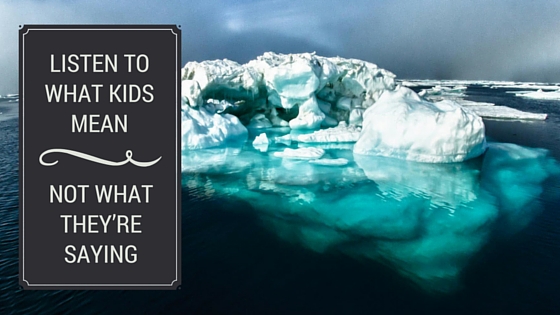
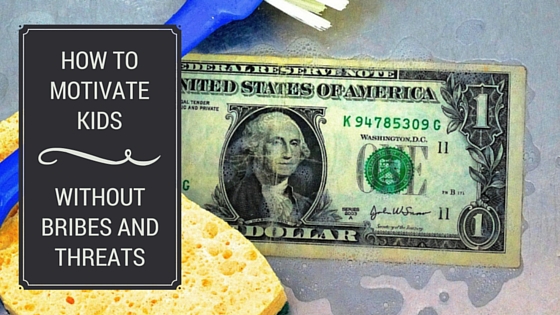
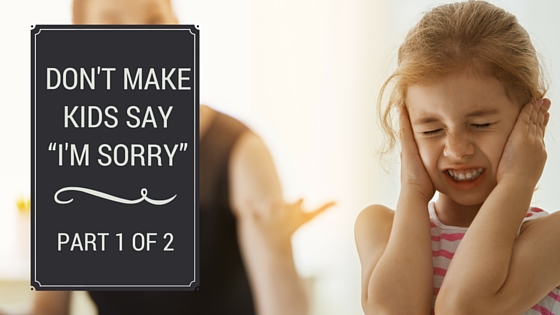
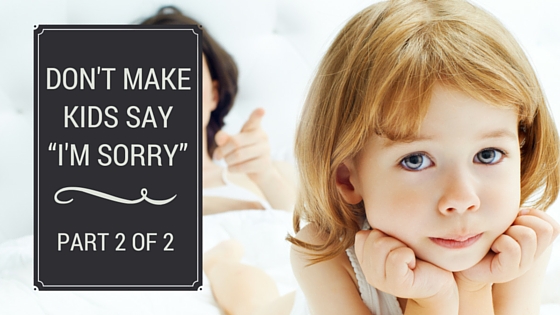
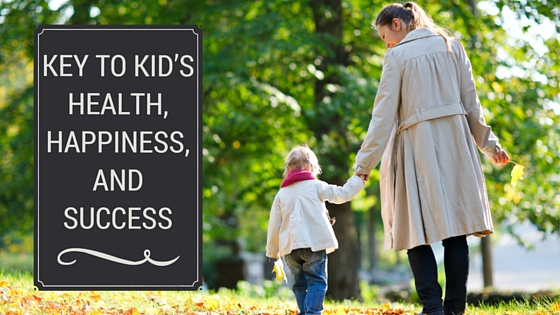
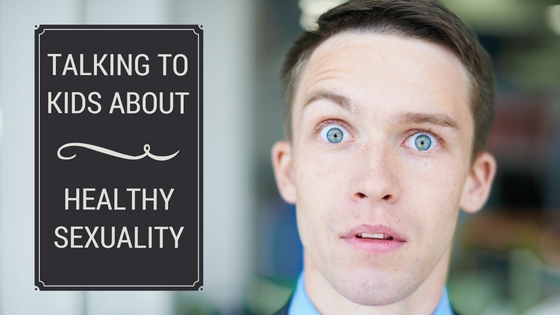
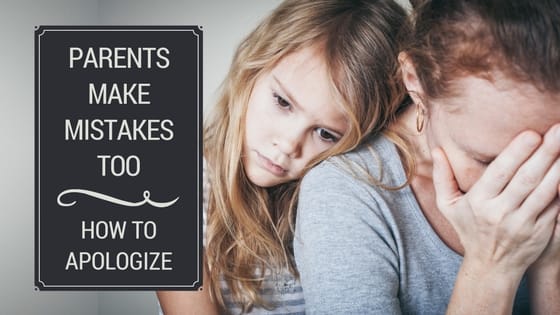
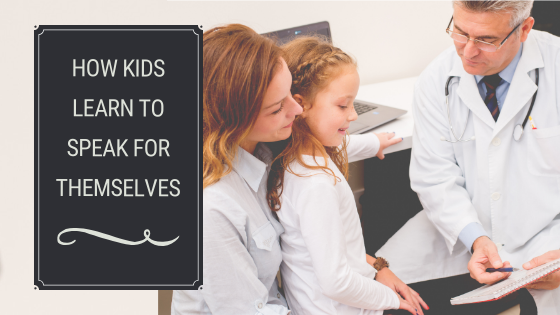
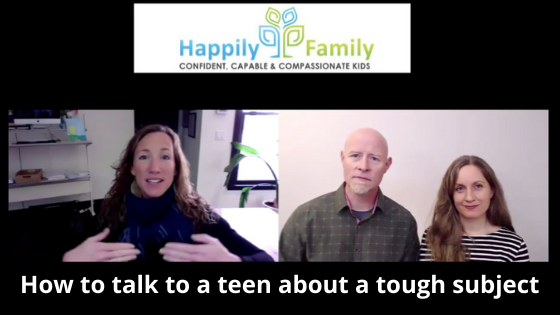
It’s encouraging to me that I can read these very helpful concepts and feel like I have a sense of how it works and how to do it. I might have even caught myself doing this very thing. In real life. Shocker. This is one of the best articles I’ve read on grownup-kid communication. I can always use more practice – practice makes purple.
Reba, I’m glad you liked the article and found it useful. It’s always a good reminder for me to think about the child’s perspective, which is often so different from mine. We gave our kids cameras when they were young and it showed us, in full color, how they see the world differently than we do. It was an awesome experience. And such good practice for us as adults to see/hear that our kids and other people don’t see the world the same way, and have a different way of expressing what they see.